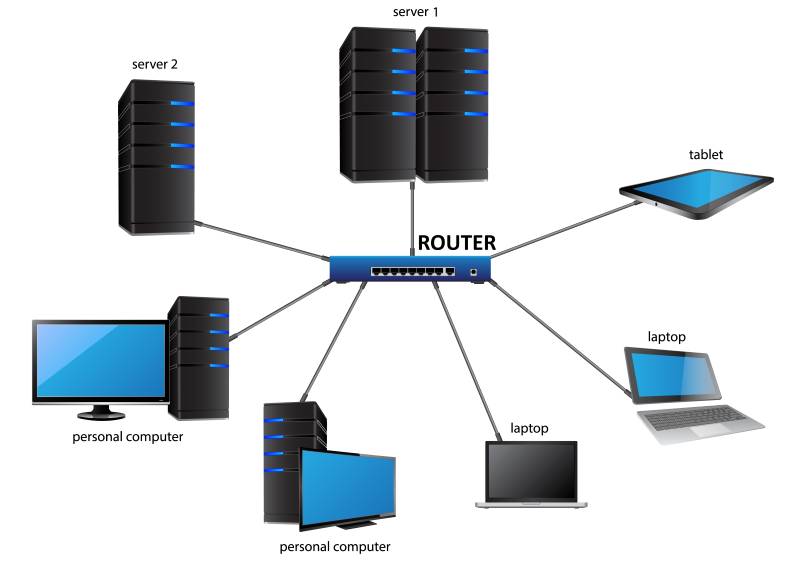
2410 Victoria Street, St Gabriel, LA 70776 | Phone: 1-225-255-3860

Beginner's Guide to Home Networks
Have you ever heard about 802.11ac? What about CAT5 vs CAT5e? Or U.FL to RP-SMA? That's some scary stuff, I know.
I was scared by these terms as well. I used to be. But these days I run my home network like an overlord.
And so will you, by the end of this article. Let's get started!
1. Wired home networks
People started to use wired networks about two decades ago. And many of them still use wired networks today, because they are
fast, reliable and secure.
A wired network has a key component, a piece of hardware called "router", which is connected to all the devices that belong to
the same network. It's got a WAN input port, which receives Internet data, and several LAN ports, used to send that data to
your computers.




Some fancy routers even have two WAN ports, allowing you to connect two Internet cables from two different service providers.
This way, you can keep your business connected to the Internet at all times, even if one of the connections is down.
A router is, in fact, a tiny computer that's built with data exchange in mind, and it includes several LAN (Local Area Network)
ports. Standard routers have four Ethernet ports, allowing you to connect up to four wired devices to a network.
Older Ethernet ports support speeds of up to 100 Mbps, while Gigabit ports can transfer data at 1 Gbps. Yes, that is a 10 times
speed increase, and it shows! You'd need about 80 seconds to download a 1 GB movie over a standard Ethernet connection, and
only eight seconds over a Gigabit connection. This is the ideal scenario, of course, but it shows clearly that the investment into
a Gigabit router is well worth it.
You can expand the wired network to your liking by adding as many routers as needed. To give you an example, you can connect
up to seven devices to a network that consists of two routers, each one of them having four ports. The extra LAN port would be
used to connect the two routers together, of course.
If you are only interested in linking two computers over the network, there is a nice little trick that you can use: purchase a
crossover cable, which has the data sending and receiving wires inverted at one of the ends. It's a primitive way of setting up a
wired network, but it works fine, and you won't have to invest your money into a router.
2. Wireless home networks
Wi-Fi networks are similar to wired networks, but they don't need any cables, because the signal propagates through the air.
Wireless networks are easy to set up and use, but sometimes they don't work as expected, because signal strength and quality
decreases as you move away from the router.
There are some things that can be done to improve signal quality and Wi-Fi range. By using higher-quality antennas for your
router, you can literally double signal strength, for example.
You may have heard about Wi-Fi clients, a.k.a. WLAN clients. These are simply the devices that connect to the wireless
network: your smartphone, tablet, laptop, and so on.
Wi-Fi networks operate using the 2.4 GHz and 5 GHz bands. The higher frequency band works faster, but has a smaller range.
So, if your Wi-Fi clients are close to the router, use the 5 GHz band for them; otherwise, use the 2.4 GHz band.
Do you remember the 802.11ac term I've used at the beginning of this article? It's the modern, currently used Wi-Fi standard. I
won't bother you with the previous ones; you can always find a guide that lists the older standards on the Internet.
It's important to know that the newest standard can support Wi-Fi speeds of up to 2 Gbps. Sounds great in theory, but real-life
speeds aren't that impressive.
Security is an issue with Wi-Fi networks, because anyone can connect to an unprotected network. People use the WPA2
encryption protocol, in conjunction with the AES (Advanced Encryption Standard) algorithm to secure their wireless networks. It's
the only solution that maximizes your chances of keeping the hackers away from your Wi-Fi.